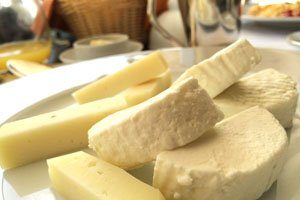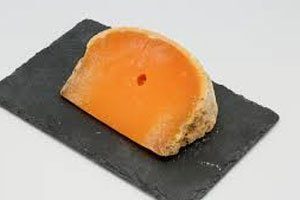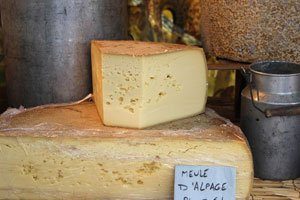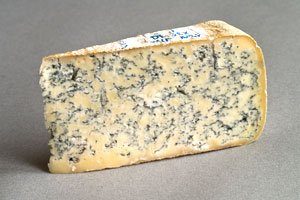You might have grown up familiar with only cheddar and gouda, and the occasional parmesan on pasta and mozzarella on pizza. But there are hundreds and thousands of cheese existing all over the planet, with almost all countries (especially the West) producing their own kinds of cheeses. Cheese is one of those food products that one could explore to have a taste of the world.
Cheese cannot be categorized based on one standard, not because there are too many of them, but because there are many factors that were considered while classifying cheese. Some cheeses also fall in more than one category. Cheese are classified according to milk source, length of aging, methods of processing, fat content, dairy content, texture, country of origin and other characteristics. It can also be conventional or artisanal, fresh or aged, creamy or firm, skimmed or whole, with or without rinds and can be white, yellow, orange or blue.
Since cheeses can be classified into many types, here are its most common classifications and some famous examples of cheese that go under every categories:
 1. Fresh cheese
1. Fresh cheese
Fresh cheeses are the most basic kinds of cheese. They are unaged, with milk curdled and drained, and were made with little processing methods. They can spoil after just a few days so they need to be eaten soon after they are made. Fresh cheese looks the same inside and out because they have no rind. With its high moisture content, the texture of fresh cheese is wet and mouse-like. It can also be stringy or firm and crumbly. Fresh cheese are usually covered in herbs, wrapped in leaves or rolled in ash. You can use them by cutting cheese into pieces with cheese slicer.
Examples:
- Mozzarella (Italy) – a cheese made from pasteurized or unpasteurized cows’ or water buffalos’ milk that has a mild and creamy flavor. The curd is knead and stretched while hot until it reaches the desired consistency. It can be sold fresh or packed in a salty brine. Mozzarella is usually used in pizza and lasagna, but it can also be eaten fresh with olive oil and seasonings, or as filling to sandwich.
- Cottage cheese (UK and USA) – a creamy, lumpy cheese that has a mild, sweet flavor. It is made from pasteurized or unpasteurized cow’s milk, with curds drained but not pressed. Cottage cheese is sold in cups and pots. It can be eaten by itself, with toast, fruits and can even be used in salads.
- Ricotta (Italy) – a creamy, fluffy and grainy cheese that tastes mildly sweet. The casein in milk is filtered away from whey during production process. It can be made from the milk of sheep, cow, goat or buffalo. Ricotta is usually used as a sauce thickener or dip, or as an ingredient in lasagna, cheesecake, pizza, calzone, cassata and ravioli.
- Chevre (France) – also known as Goat cheese, chevre has a tangy, tart-like earthy flavor with a distinctive aroma. It is made from pasteurized or unpasteurized goat’s milk. Fresh chevre has a slightly chalky texture and a lemony flavor. It can come in many shapes and sizes such as log shapes, round patties, loaves and pyramids. It can be eaten as a snack or dessert, and are sometimes flavored with herbs and spices.
 2. Semi-soft cheese
2. Semi-soft cheese
Semi-soft cheese are made of lightly pressed curds with a rubbery, elastic texture. Once the cheese is formed, it is rinsed and brushed with a solution of salty water with bacteria, encouraging molds to appear. The molds it can attract can be gray, white or brown, and forms a leather-like rind. Those with thin and barely formed rinds are usually mild and buttery; while those with thicker, mold-encrusted rinds have stronger and denser taste. Semi-soft cheeses, in general, are ideal for snacks, desserts, sandwiches and other recipes in which cheese needs to be melt.
Examples:
- Munster (France) – a soft-washed rind cheese made from unpasteurized cow’s milk. Its texture is smooth, creamy and sticky, and has a tangy and savory flavor. Its rind is usually red and slightly humid due to washings, and has a stinky strong aroma. Munster cheese is best paired with tomatoes, salad, onions or with beer.
- Port-Salut (France) – a smooth and creamy cheese that has a mild, savory, sweet flavor. It is made from pasteurized cow’s milk and has a distinctive, washed, orange rind.
Other examples of semi-soft cheeses are young goudas, blue cheeses, and those with washed rinds and bloomy rinds.
 3. Semi-hard cheese
3. Semi-hard cheese
Semi-hard cheeses are made from curds that are heated, pressed, molded and left to ferment for three to nine months, or even longer. These cheeses have less moisture and tend to have holes. Their rinds can be natural, wax or made of cloth.
Examples:
- Cheddar (England) – a cheese made from pasteurized cow’s milk that ranges in flavor from mild to sharp and in color from ivory white to pumpkin orange. Cheddar is the most popular cheese known all over the world. During processing, its curds are cooked and milled into small pieces, which are pressed into large blocks. The blocks of curds are then stacked on top of another to remove excess moisture. The flavor of cheddar cheese also vary dramatically, and some taste very different from the smooth and mild American cheddar. It is best eaten in sandwiches, casseroles, grilled cheese, or as it is.
- Gouda (Netherlands) – a wax-rind cheese made of pasteurized or unpasteurized milk from goat, cow or sheep. Like cheddar, the more it is aged, the firmer its texture it becomes and the richer in flavor it gets. Its flavor can vary from mild and creamy to deeply flavorful. Its rind can range from yellow to red to even black. Young gouda cheeses can be melted and added into dishes, while aged ones are best eaten as it is or grated into casseroles and salads.
- Emmental (Switzerland) – the most known “Swiss cheese,” emmental is made from unpasteurized cow’s milk with curds cooked and firmly pressed together. The holes are created by carbon dioxide bubbles created by a type of bacteria that consumes lactic acid. It tastes sweet and a bit fruity with tones of freshly cut hay. It is best eaten with a glass of wine, or in grilled cheese, fondue and casseroles.
- Edam (Holland) – a mild, salty and nutty cheese with a pale yellow interior. It is made from unpasteurized cow’s or goat’s milk, and its rind is made of red paraffin wax. It’s best eaten with fruits like cherries, melons, peaches, apricots, apples and pears. It also pairs with crackers, biscuits and wine.
- Machego (Spain) – a firm and compact cheese with a rich buttery texture. It is made from unpasteurized sheep’s milk and has a color ranging from ivory white to straw yellow. Its flavor can be fruity, grassy, nutty, tangy, salty or sweet, depending on the age. It is usually eaten as it is or partnered with Spanish quince paste or sherry.
- Monterey Jack (USA) – a very mild, buttery and a bit tangy cheese made from pasteurized cow’s milk. It is a compact, firm, creamy and supple and its color ranges from pale yellow to orange. Its easy-to-melt properties makes it good for casseroles, grilled cheese and dips. It is often mixed with hot peppers and chili.
Some of the cheese listed above can also be categorized as hard cheese when aged longer.
4. Hard cheese
Hard cheeses are generally the most complex and firmest of cheese. These are pressed for hours and even for weeks to make curd more compact and remove the whey. Because of how it is prepared, hard cheese have the least water content. These are packed into molds and stored for long periods of time.
Examples:
- Asiago cheese (Italy) – a compact, cow’s milk cheese that may be smooth to crumbly. It has a natural-looking rind which can range from straw-colored to brownish gray depending on age, and has a pungent aroma. Asiago cheese is best for grating, slicing and melting, making it great for salads, soups, sandwiches, and pastas.
- Parmesan (Italy) – a dense, grainy and crystalline cheese that is made from unpasteurized cow’s milk. It is also known as Parmigiano Reggiano or Italian hard cheese, but most producers are using the name “parmesan” to avoid legal issues with the name. Its flavor is fruity, nutty, sharp and savory. It can be eaten as it is, but it is usually grated over pastas and soups, and risottos. Be sure to check out great options for a rotary cheese grater.
 5. Blue cheese
5. Blue cheese
Among all cheese types, blue cheese is hard to miss. As the name suggests, these cheese have blue, blue-gray or blue green spots or veins because of molds. Blue cheese contains Penicillium cultures that would allow these molds to form and grow within the cheese, giving it a unique flavor and distinct smell. Blue cheeses generally tend to have a sharp and salty flavor.
Examples:
- Roquefort (France) – a popular French cheese that is moist, creamy and crumbly. It is made from unpasteurized sheep’s milk, and the blue pockets of mold are colonies of Penicillium roquefort, a type of mold naturally found in the caves of Roquefort, France. It tastes salty, sharp, tangy, nutty and has a bit grassy flavor due to the grassiness of sheep’s milk. Roquefort is aged for at least five months. It is eaten as it is, or in salads and dressings or with honey and nuts.
- Stilton (England) – a crumbly and fudgy cheese made from pasteurized cow’s milk. It is formed into a cylindrical shape and is allowed to form its own natural rind or crust. Its distinctive feature is its blue veins and its creamy feel on the tongue while eaten. It goes well with crackers, breads, biscuits and walnuts, as well as wine like sherry and port wine.
- Gorgonzola (Italy) – a firm and crumbly cheese that is quite salty and has a nutty aroma. It is made from pasteurized cow’s milk and aged around three to four months for full ripeness. Its flavor can range from mild to sharp, and its blue veins give a distinctive “bite.” It can be eaten in a lot of ways, often with short pasta dishes and pizza, and paired with wine.
6. Soft-ripened cheese
Soft-ripened cheese, or soft white rind cheese, are distinguished by their white fuzzy rind and creamy interior. It has a firm and chalky texture, and a robust aroma. Cheese varieties of this type are aged from the outside in by exposing the cheese to mold, which breaks down cheese protein and fats to make it soft and flavorful. The mold also helps ripen the cheese and prevent the insides from drying out, maintaining the buttery and creamy interior.
Examples:
- Brie (France) – a soft cheese produced from unpasteurized cow’s milk. It has a buttery texture and its flavor can be mild, tangy and fruity depending on the ingredients added on production. Brie is aged for at least four weeks. It has a pale color that looks like white mold, with a grayish tinge under the rind. It is best eaten as a dessert and best served at room temperature.
- Camembert (France) – a rich, buttery and milky cheese made from unpasteurized or raw cow’s milk. Handmade camemberts, especially those produced using the same process as the original, call their cheese Camembert Normandie. Fresh camembert is crumbly and hard, and has a mild and mushroom-like aroma. It is best eaten as it is, used as spread on sandwiches, and partnered with light red wine. It’s also great when baked in a crust, breaded and deep-fried.
 7. Washed-rind cheese
7. Washed-rind cheese
Washed-rind cheese are sometimes called “stinky” cheese due to their pungent aroma. But even with a strong scent, many washed-rind cheeses have a mild taste. These cheeses are washed repeatedly with a saltwater brine, or mold-bearing liquids like beer, wine or brandy during the ripening phase. The washing encourages the growth of the Brevibacterium linens bacteria that causes the odor, the distinctive flavor and the reddish-orange rind. Washed-rind cheeses can either be soft, semi-hard or hard.
Examples:
- Taleggio (Italy) – a soft and creamy cheese made from pasteurized cow’s milk. It is one of the oldest soft cheeses ever made. It has a strong, pungent scent (even comparable to feet), but has a mild, tangy and unusually fruity taste. The cheese is washed with seawater every week for around six to ten weeks to prevent mold infestation. It is best eaten as grated on salads and with red and white wines.
- Limburger (Germany, Belgium, Netherlands) – a semi-soft cheese with a mild and earthy flavor, and has pale orange-brown rind. Like Taleggio, it has a stinky aroma that kind of smells feet, but the flavor is mild and creamy. On the first month of aging, it is firm and crumbly, but when it is fully-aged, it becomes soft and chalky. It’s best eaten as a filling to dark rye bread, and also goes well with cold bock beer and Belgian-style ales.
8. Brined cheese
Brined cheese, or pickled cheese, is cheese ripened in a brine solution on a covered, airtight container. This prevents growth of bacteria and gives the cheese good stability. Most brined cheeses are rindless, white in color, and have salty and acidic flavor due to its use of brine. Brined cheeses can range from soft to hard, and are usually made from the Middle East and Mediterranean countries.
Example:
- Feta (Greece) – a soft cheese made from a mixture of pasteurized or unpasteurized goat’s and sheep’s milk, and recently, from cow’s milk. It is salty, tangy and moist, and its texture can range from crumbly to creamy depending on age. The EU protects the “feta” name, and only allows cheese to be labeled as such if it is made in either mainland Greece or Lesbos, and if it was produced with at least 70% sheep’s milk. Other feta-like cheese produced outside the said territories are called “white cheese.” Feta is best eaten when crumbled in salads, used as filling in sandwiches, broiled with olive oil, grated in Mexican dishes or paired with beer and red wine.
9. Processed cheese
Processed cheese may not be considered real cheese, but it is a food product made from cheese (or byproducts of the cheesemaking process), mixed with whey, emulsifiers, vegetable oils, food colorings, salt, sugar, cream, gums and other ingredients. It can be flavored and spiced, and its shelf-life is generally longer than other types of cheeses.
Examples:
- American cheese (USA) – cheese made from a blend of cheddar and Colby cheeses. These are usually produced by Kraft Foods, Borden and other cheese-processing companies.
- Provel pasteurized pizza cheese (USA) – cheese made from blends of Swiss cheese, cheddar and provolone, and commonly used in St. Louis-style pizza.
- Mozzarella-like processed cheese (USA)
- Laughing Cow and DairyLea-brand cheese (UK)
The Best Cheeses Per Type and Kind
Now that you know the different types and kinds of cheese, we are also giving you a list of the best cheeses we found based on type and kind.
Fresh Cheeses
1. BelGioioso Fresh Mozzarella Cheese
This is an all-natural mozzarella cheese that is crafted in Denmark. It is made of milk, vinegar, enzymes, and salt. The cheese is placed in an easy open vacuum pack to keep its freshness. With its delicate flavor, you can use it to enhance sandwiches and other light meals.
2. Breakstone Cottage Cheese
If you want some fresh cheese for a snack, you can indulge in Breakstone’s low fat cottage cheese. Each cup serves 4 ounces of cottage cheese. It contains 2 percent milkfat which is great if you’re on a diet.
3. PastaCheese Ricotta Freshly Hand Dipped
This is a fresh ricotta cheese that is delectable rich and creamy. It is made from the freshest and most superior grade A Vermont farm milk. This cheese is created via a 100 years old Artisan method. It is great to use when cooking pasta.
4. Celebrity Chevre Cheese
This is a creamy and rich Chevre or goat cheese. It is aged for a few weeks only, therefore, it is firm enough to slice but creamy enough to spread. It is made from pasteurized goat’s milk. It is a mild, smooth, and refreshing cheese that you can enjoy. Aside from the plain one, it also comes in honey flavor and fig.
Semi-Soft Cheeses
1. Munster d’Alsace
This cheese is imported from France. It is a washed rind cheese that is native to the Alsace region of France. It is made from pasteurized cow’s milk. You can pair it with Gewurztraminer wine and it is also a great choice to add to any gift or wine baskets.
2. Igourmet Port Salut by SAFR
This is the cholesterol-reducing cheese alternative and is believed to lower cholesterol by 20 percent. It is a semi-soft cheese that is popular for its orange rind. It is rather mild and sweet in flavor, unlike other French cheeses. You will enjoy this cheese’s smooth and velvety with a slightly acidic taste.
Semi-Hard Cheeses
1. Widmers Cheese Cellars 10-Year-Old Cheddar Cheese
This 10-year-old cheddar cheese has a sharp, delicious, and creamy taste. You can pair it with buttery crackers and salami or add it to your homemade macaroni and cheese. It also melts well on any burger. This is also a great cheese to add on any cheese platter.
2. Gouda Cheese Assortment Gift Box
This gift box contains four ½ pounds gouda cheese wedges. It can last for up to 9 months if refrigerated. You can give it as a gift to any cheese-lover on a special occasion. The gouda cheeses are vacuum wrapped to maintain their freshness. It includes Burning Melange Gouda, Foenegreek Gouda, Young Plain Gouda, and Mustard Melange Gouda.
3. Igourmet Frantal Emmental Cheese
This cheese is imported from France. It is made from pasteurized cow’s milk and aged for a minimum of 2 months. It has a buttery taste that is slightly reminiscent of fresh nuts. It also has many round walnut-sized holes that are evenly distributed throughout the cheese which is a result of a complex and difficult cheese making process.
4. Vermont Spiced Edam Cheese
This edam cheese is shipped in a reusable insulated cooler with ice packs to maintain its freshness. It has a hint of maple and walnut with a medium-firm texture. It has a nuanced buttery note that adds a savory balance to its sweet taste. It is best paired with rye flatbread, sugared dates, walnuts, and dark chocolate. And also with wines such as dry Rose or India Pale Ale.
Hard Cheeses
1. BelGioioso Asiago Cheese Wheel
This cheese is wonderfully mild and versatile. It has a nutty flavor, pungent aroma, and a creamy finish. You can add it to foods such as soups, pizzas, pasta, salads, and flatbreads to enhance their flavor.
2. Igourmet Parmigiano Reggiano
This parmesan cheese is imported from Italy. The Igourmet Parmigiano Reggiano is a kind of hard cheese that is perfect for antipasti platter and you can also serve it with strong red wine. It has a unique nutty, fruity, and grassy flavor and has a creamier texture. It is made from 100 percent all-natural, grass-fed, and unpasteurized cow’s milk.
Blue Cheeses
1. For the Gourmet Roquefort Cheese
This cheese is white, crumbly, and slightly moist. It has distinctive veins of blue mold and has sharp odor and flavor. It is made from unpasteurized sheep’s milk. It is delicious to add on a baguette, salad, or melted on a steak. You can also enjoy it with a bottle of Sauternes.
2. Royal Blue Stilton Cheese by Long Clawson
This stilton cheese is imported from England. It is made from pasteurized cow’s milk. You can add it to salads and other meals that you are cooking. It is also perfect for snacking and as a part of the cheese course.
3. Gorgonzola Cheese Torta
This is a blend of silky gorgonzola with cream cheese and pears, topped with a combination of cranberries and roasted hazelnuts. It is perfect with all kinds of fruits and it is also good on bread, crackers, and celery sticks. You can also use it for making a mixture for a creamy soup or pasta sauce.
Soft-Ripened Cheeses
1. Eiffel Tower Canadian Bree Cheese
This brie cheese is imported from Canada. It is a classic, taste bud-seducing cheese that is a favorite of many cheese lovers. It is rich, supple, and downright tasty. It is made from cow’s milk. You can best enjoy it with baked fruits.
2. President Organic Camembert Cheese
This organic camembert cheese is made in the heart of Normandy, France. It is made with all the benefits of organic milk. It is soft, creamy, well-balanced, and slightly salted. It is made from pasteurized cow’s milk, lactic starters, salt, and animal rennet.
Washed-Rind Cheeses
1. Igourmet Taleggio Cheese
This cheese has a rough and rosy crust and a pale yellow interior. It has a pungent aroma but has a rich, buttery, fruity, and salty flavor. It is the softest and creamiest member of the famous Italian Stracchino cheeses. It is made from pasteurized cow’s milk.
2. Cheesers Brick Limburger Cheese
This cheese originated from Belgium. It is a crumbly cheese with a brie-like texture, tangy flavor, and a mild taste. It pairs well with sweet onions and mustard. You can also try it on rye bread or alongside a German beer.
Brined Cheese
1. igourmet Bulgarian Feta Cheese
This cheese has a smooth and creamy texture, sliceable body, tarty taste, and a bit salty. It is a white brine cheese with a crumbly and creamy texture, making it perfect for salads or to add to a cheese board or antipasti platter. This cheese is made from pasteurized sheep’s milk and it is one of the best feta cheese in the market.
Processed Cheeses
1. Kraft American White Cheese
This is a pasteurized processed American cheese that is made from select natural cheese and other ingredients that makes its one of a kind taste. You can shred this cheese and add it to pasta and other foods to enhance flavor. It should be kept refrigerated to extend shelf life.
2. Laughing Cow Creamy Queso Fresco and Chipotle Cheese Wedge
This processed cheese will help you reinvent your tostadas or give you the perfect amount of spice to bruschetta. You can even add it to shrimp tacos for more flavor. These are creamy cheese wedges that are spreadable, meaning, you can also spread it on bread and crackers for snacking.
3. Sonoma Jacks Gourmet Processed Cheese Wedges Pepper Jack
These processed cheese wedges are made with 100 percent natural cheese. It is ideal for lunches, camping, hiking, and boating. You can pair it with crackers and fruits or eat them as snacks.
These are the best cheeses we found that you may like. Cheese is indeed a great addition to any snack or meals. Aside from that, you can also eat it alone as appetizers or snacks.
Check out this amazing infographic from Illuminating Facts about all the type of cheese in use today!


 1. Fresh cheese
1. Fresh cheese 2. Semi-soft cheese
2. Semi-soft cheese 3. Semi-hard cheese
3. Semi-hard cheese 5. Blue cheese
5. Blue cheese 7. Washed-rind cheese
7. Washed-rind cheese